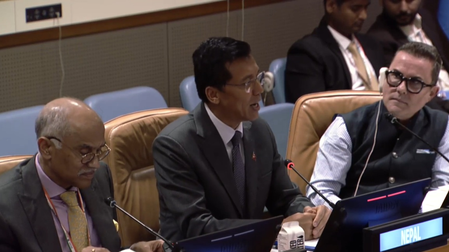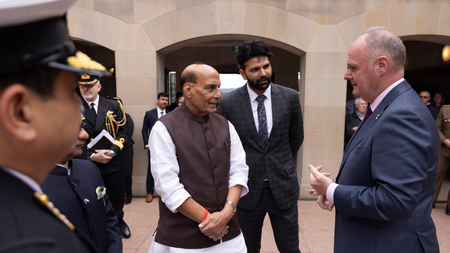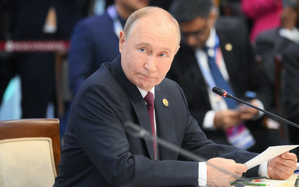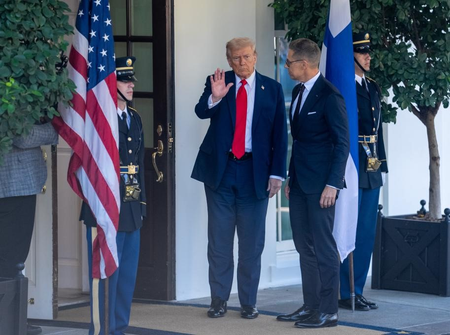
United Nations, Oct 10 (IANS) “Hindi is now the language of global communication” boosted by social media, yoga, and international education, BJP MP PP Chaudhary has asserted.
Speaking at the Hindi Diwas observance here on Thursday, Chaudhary remarked, “Even in today’s digital age, Hindi continues to hold its global sway”.
“Hindi is not just a language; it symbolizes India’s spirit, identity, and unity. It is the thread that connects the entire country, from north to south and east to west”, he added.
And now “the use of Hindi is steadily increasing worldwide”, he said.
Diplomats from several countries with large Indian diasporas also told the meeting about Hindi’s role in their societies.
Chaudhary said that Hindi is being taught and used in daily life in many countries such as Mauritius, Nepal, Sri Lanka, Suriname, Fiji, and Guyana and the World Hindi Secretariat in Mauritius is playing an important role in promoting the Hindi language, he said.
The United States also has a large Hindi-speaking population, and Hindi is taught in elite universities like Harvard, Columbia, Cornell, Chicago, and Texas”, he said.
India’s Permanent Representative P Harish said, “While there are 22 constitutionally recognised languages and thousands of dialects in India, Hindi holds a special place in our linguistically diverse country”.
Hindi, he said, has “become synonymous with the vibrant cultural landscape of India, and has transcended geographical boundaries to emerge as a popular language around the globe, on the strength of our diverse diaspora as well as the prominence of Bollywood and literature”.
Economic and Social Council President Lok Bahadur Thapa , who is also Nepal’s permanent representative, said, “Nepali and Hindi languages share common linguistic roots is they evolve from the Sanskrit and share the same Deva Nagari script, and Hindi is spoken widely in his country.
Nepal is “one of the multi-lingual, multi-ethnic, multi-religious and multicultural nations.”, he said. “Unity in diversity and peaceful coexistence have remained our social and cultural ethos over millennia”.
Chief of the UN’s Communications Campaigns Service Nanette Braun said, “Hindi is the world’s third most spoken language (after English and Mandarin), and as such, it is a powerful medium, connecting diverse perspectives and serving as an influential voice in international discourse”.
“As part of our multilingual outreach, the UN social media platforms in Hindi were launched in 2018, marking the start of the UN Hindi project, and followed by the Hindi News website in January 2019”, she said.
“The UN News Hindi website, in the past year, garnered around 346,000 views by 193,000 active followers”, she added.
Joan Forner Rovira, the permanent representative of Andorra, which sponsors the biennial multilingual resolution, said his country with the Dominican Republic, launched the Group of Friends of Multilingualism at last month’s high-level General Assembly meeting.
Andorra, where people speak three languages, has been “very attached to the languages” and that is why for about eight years it has been cosponsoring the resolution on multilingualism.
The prior resolution notes that multilingualism is “a core value” of the UN and calls on the Department of Global Communications “to continue to disseminate through its flagship social media accounts original content” in Hindi, in addition to the six official UN languages and Kiswahili and Portuguese.
Landry Sinomana, the First Counsellor at Burundi’s UN Mission, who had studied in Pune and Chandigarh, gave a part of his address in Hindi.
He said that languages not only build bridges but also give a deeper understanding of a country.
He said that he learned to write Hindi and Sanskrit, which helped him get an insider’s view of India.
Guyana’s Deputy Permanent Representative Trishala Persaud said that while the diaspora maintained many traditions from India, the colonial government’s use of English led to them losing Hindi fluency.
But numerous Hindi words and their local derivatives have been “integrated into Guyana’s multi-ethnic, diverse cultural tapestry and have been fused into Guyanese, what we call Guyanese Creole”.
Trinidad’s Permanent Representative, Neil Nadesh Parsan, said, “Hindi is poetry. Hindi is history and Hindi is emotion woven into the fabric of India’s identity. It has transcended borders, connecting millions across the globe through literature, cinema … music, and everyday conversation”.
Mauritius Permanent Representative Milan J.N. Meetarbhan said that scholars studying old wedding rituals, especially in Bihar and Uttar Pradesh, came to his country to examine them because that is the only place they had been preserved as they were 150 years ago.
Those who came as indentured laborers to Mauritius brought with them copies of the Ramayana, and it is still studied by the young “because their forefathers set up what we called the ‘baitkas’. These were the evening schools where Hindi was being taught”.
Suriname’s Permanent Representative Sunil Algram Sitaldin said his country is unique in the Western Hemisphere because Hindi “has been preserved by five generations, not only as a means of communication, but also as an integral part of the religion and culture”.
The language has “evolved into what we call Sarnami Hindi,” which “was shaped by local influences and generations of cultural exchange”.
–IANS
al/rs




